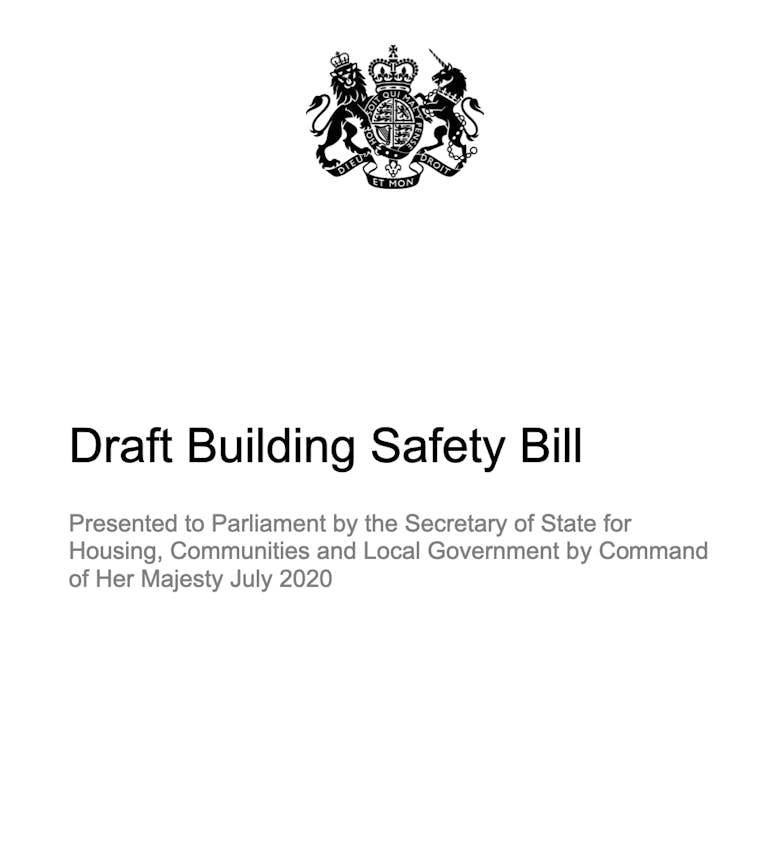The Government published the Building Safety Bill (the “Bill”) this week, which was first announced in draft form in July 2020 and intends to strengthen the regulatory system for building safety following the Grenfell Tower fire in June 2017. This article discusses the changes the Bill proposes to introduce to the Defective Premises Act 1972 (the “DPA”) and the limitation periods for causes of action arising under the DPA and the Building Act 1984.
Background
Following the Governments’ Independent Review of Building Regulations and Fire Safety led by Dame Judith Hackitt in 2018, building owners have been required to incur the costs of expensive remediation measures for developments comprising combustible cladding.
Building owners considering claims to recover their losses in contract, tort and/or under the DPA against the original project team responsible for designing and/or constructing the cladding works have often been faced with a spectrum of problems including demonstrating that the type of work qualifies for a claim under the DPA, lapsed limitation periods and project teams that are no longer trading or are uninsured.
The Bill proposes to introduce several important changes to the provisions of the DPA, including in relation to limitation. These changes aim to extend redress provisions for the owners of both new and existing buildings and will impact significantly on claims by building owners.
The DPA
The DPA came into force in England and Wales on 1 January 1972. It enables subsequent tenants and owners and anyone else who has a legal or equitable interest in a property to bring a claim for defective work, where the work renders the dwelling unhabitable.
The specific duty owed by those involved in construction projects is set out at section 1 of the DPA which provide that those “carrying out work in connection with the provision of a dwelling” owe a duty to do the work in a “workmanlike or professional manner with proper materials” so that the dwelling will be “fit for habitation” when completed.
Anyone seeking to claim under the DPA must show that their claim satisfies the requirements of section 1:
- A “dwelling” includes new buildings only; it does not extend to repairs, extensions or refurbishments to existing buildings.
- A person “carrying out work in connection” is not defined in the DPA but has been held by the Courts to include contractors, developers and architects but not Approved Inspectors.
- The term “fit for habitation” is also not defined in the DPA. The Courts have held that it will be dependent on the circumstances of an individual case whether a particular defect renders a property unfit for habitation. In Rendlesham Estates Plc & Ors v Barr Ltd (2014) EWHC 3968, the Court held that to be “fit for habitation”the dwelling must, on completion, have been capable of occupation for a reasonable time without risk to the health or safety of the occupants and without undue inconvenience or discomfort to the occupants.
It is important to note that liability under the DPA is strict; it is not possible to argue, as a defence, that it was reasonable to believe that the work was adequate nor is it possible to contract out of the DPA by agreement.
Limitation
The current limitation period (i.e., the period within which legal action must be brought) in relation to claims under the DPA is six years from the date of completion of the property. It was recently held in the case of Sportcity 4 Management Ltd v Countryside Properties (UK) Ltd [2020] EWHC 159 that the execution of further work undertaken after completion of the original project does not extend the limitation period under the DPA in respect of claims concerning the original works.
Changes implemented by the Bill
Clauses 125 and 126 of the Bill propose to introduce several significant changes to the DPA (and the Building Act 1984) in England and Wales.
Clause 125 – DPA to now apply to extension or refurbishment works to existing properties
Subsection (1) of clause 125 of the Bill proposes to amend the DPA by inserting a new section 2A into the DPA which creates a new duty on those who do any work on a building which contains a dwelling (i.e., extension or refurbishment works to an existing property) to ensure that the work does not render the dwelling unfit for habitation, provided the work was carried out during the course of business.
Clause 126 – new extended limitation periods for breaches under the DPA and the Building Act 1984
Clause 126 of the Bill proposes to make several changes to the limitation periods for claims arising under the DPA and the Building Act 1984.
- In respect of an action under section 1 of the DPA, the limitation period is extended from the current six years to fifteen (new section 4(B) of the DPA).
- The extended limitation period for claims under section 1 of the DPA will apply both prospectively (i.e., in respect of future work) and retrospectively (i.e., in respect of work that has already taken place).
- The Bill expressly provides that, where work is done subsequently to rectify original defective work, the fifteen-year limitation period starts again when that further work is finished.
- In respect of an action under (the yet to be commenced) section 38 of the Building Act 1984 and new section 2A of the DPA, the limitation period is also fifteen years.
- The extended limitation period for claims under section 38 of the Building Act 1984 and section 2A of the DPA will only apply prospectively i.e., they apply only to work completed after the clause comes into force.
- Where a limitation period is extended retrospectively for claims under section 1 of the DPA, the clause sets out two important exceptions to claims being brought by building owners:
- First, subsection (5) provides that, where a claim is issued and the continuation of the claim would breach a defendant’s human rights, the Court must dismiss the claim; and
- Secondly, subsection (6) provides that, where a claim has previously been dismissed, the extended limitation period will not, by itself, be sufficient to reopen the claim.
The explanatory notes to the Bill state that clause 126, which includes these revised limitation periods, will come into force two months after the date on which the Bill receives royal assent.
Commentary
In recent years, the Courts have adopted an increasingly liberal approach to enable cladding claims to proceed, rather than being struck out or statute-barred before consideration on its merits. Marlet Homes Limited v Mulalley & Co. Limited [2021] EWHC 296 and Naylor & Ors v Roamquest Ltd [2021] EWHC 567 (TCC) are the latest in a series of recent cases where the Courts have adopted a lenient approach on the issue of limitation. In line with this approach, the changes proposed by the Bill clearly aim to make it easier for building owners to bring claims under the DPA and for breach of the Building Safety Act 1984.
Building owners, developers, contractors and consultants need to be aware of the changes intended by the Bill
It is not yet clear when the changes proposed by the Bill will become law as the Bill still has to pass through various parliamentary stages prior to receiving royal assent. However, building owners, developers, contractors and consultants need to be aware of the changes intended by the Bill. The Bill’s proposed amendments to section 1 of the DPA mean that proceedings can now be brought for claims under the DPA that were previously considered statute-barred by virtue of the previous six-year limitation period.
The changes proposed by the Bill will place greater focus on claims under the DPA and will be welcomed by building owners. However, the changes introduced by the Bill are unlikely to assist all building owners as a number of developments requiring remediation will have completed more than fifteen years ago. The fifteen-year limitation period has been criticised by action groups representing leaseholders who are in dispute with developers and freeholders. Whether the changes will go further and extend the limitation period for claims under the DPA and/or the Building Act 1984 beyond fifteen years remains to be seen.
Furthermore, while the changes introduced by the Bill may allay the concerns of some building owners as regards limitation and claims under the DPA, they are unlikely to solve the wider issue of supply chain recoverability. It is becoming more and more frequent that those who were involved in the design and build process of developments comprising combustible cladding are no longer trading, have become insolvent as a result of the number of claims, and/or lack insurance cover for the relevant period and/or type of claims being made.








